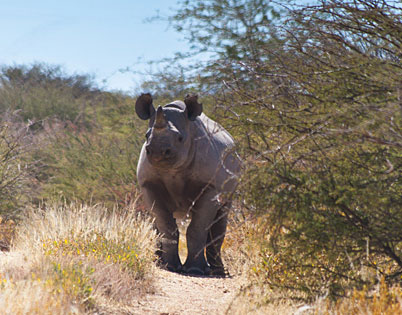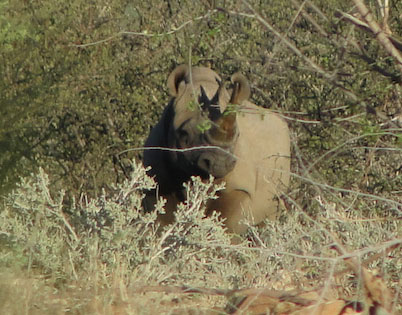Black Rhino
The black rhinoceros (Diceros bicornis) belongs to the genus of the Rhino (Rhinocerotiden). The skin of the rhinos is grey, depending on the sunlight also yellowish to dark brown in colour, free of wrinkles except for on knee and elbow joints, and almost completely hairless.
The black rhino gets up to 48 years old, reaches a shoulder height of about 160 cm and is smaller than the white rhino, which is also native to Africa. Its weight varies between the sexes: the female rhino weigh up to 900 kg, males can reach a weight of up to 1.4 tons.
The two horns are the most striking feature of the black rhino, of which the larger nasal horn up in front gets about 50 cm long, in rare cases it can reach a length of 1 m. The smaller frontal horn, sitting back on his forehead, is also up to 50 cm, depending on the age of the animal.
Black rhinos are Savannah residents and prefer open landscapes. Soft plant nutrition, usually leaves, branches or bark of various Acacias, belong to the preferred food and amount to approximately one-third of their basic food. Depending on the landscape and climatic conditions, up to 100 plant species are included in rhinos’ food source.
Rhinos usually live as loners with a fixed territory, which can be between 6 and 40 km2. Black rhinos are sexually mature at 4 to 6 years. The females usually give birth to only one cub after a gestation period of approximately 450 days, which is suckled for two years and stays with the mother for up to 6 or 7 years, depending on the sex.







